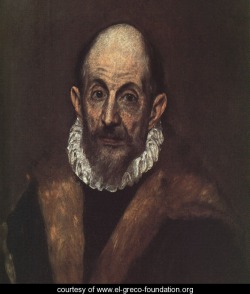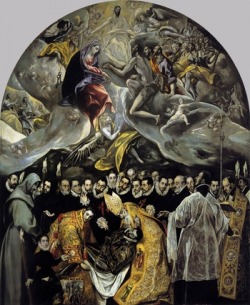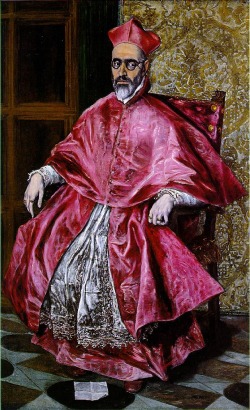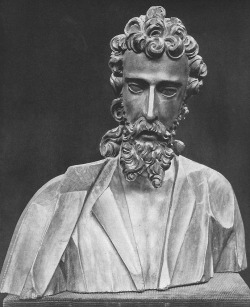Renaissance Art 101
El Greco's Works
El Greco "The Greek"

In Spanish, El Greco's name means "The Greek". His 'real' name was Domenikos Theotokopoulos and he was born in 1541 on the island of Crete where he honed his skills as a painter and sculptor. El Greco eventually left Crete to study in Italy . In Venice and Rome, El Greco was influenced by Titian and Tintoretto and he was introduced to mannerism. He later moved to Toledo, Spain. Here he had a son, Jorge Manuel, whose mother was Dona Jeronima de las Cuevas. El Greco did not deny them as his family, but never married Don Jeronima. In Spain, he lived out the rest his life and created some of his most famous works. He died in 1614.
The Burial of Count Orgaz

El Greco's style was mannerism. It is a style in which the body is almost distorted, but in a way that it appears to have movement. When El Greco paints figures, he would make them 'bendy' and stretched and a not exactly proportional. Almost like noodles. This style was very different from portraits and Madonnas other artists like Raphael painted. It also worked with the light and the pure colors. Mannerism was a popular style during the High Renaissance. This particular painting, The Burial of the Count de Orgaz, is considered to be one of El Greco's masterpieces.
The Cardinal

El Greco was known for his portraits. When compared to other works like the painting above, the difference between the two styles is clear. That was one of El Greco's talents. He could switch between the lax form in mannerism and the 'photocopy' style of portraits. This painting is of a cardinal of the church. The Church was one thing that had a great influence on both his work and his life. Like in The Burial of Count Orgaz, this portrait would have been commissioned by the church. Many of the other Renaissance artists were influenced by the church to paint alter pieces or scenes like The School of Athens, the fresco done by Raphael in the Vatican.
Bust of an Apostle

Not all of El Greco's works were paintings. He did create some sculptures like this one, featuring a priest. It is carved out of wood, and like the other few sculptures that have survived, it is not his most momentous work. However, he used his sculpting skill to make small models which he would study and use in his paintings. El Greco also made models for other sculptors to use when they worked on the full scale projects. While painting was his true calling, El Greco also made use of his skills as a sculptor.
See the "Sources and Links" page for the citation of this page
